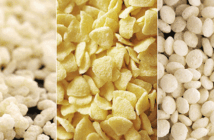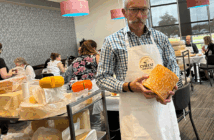By Dr Jocelyn Eason, general manager of Food Innovation for Plant and Food Research
Flavour in food receives a great deal of attention. But texture is equally important. It creates an initial and lasting impression and can make all the difference between acceptance and rejection.
Getting the right texture in food products is a big deal in the food business. Eating involves multiple senses. With texture, the primary sense is touch, but sight and sound are also key. How something sounds when it’s eaten, or its appearance can inform a person’s experience of texture.
Renowned texture expert Malcolm Bourne claimed that the three most prized texture notes are crispiness, creaminess and chewiness. Crisp apples, crunchy chips and smooth ice-cream are a world away from floury apples, soggy chips and gritty ice-cream.
Texture also influences taste. Food properties can slow down the rate of taste release. Taste intensity decreases with increasing firmness in food. And different textures can make foods with the same amount of sugar or salt taste more or less sweet or salty.
Science is currently exploring the role that texture might play in promoting health via promoting satiety. Solid and more viscous foods have been found to reduce hunger and increase satiety, compared with liquid or low viscous foods.
Texture also affects the duration of chewing, with longer chewing prompted by harder and more complex textures. This contributes to satiety too, with longer chewing durations linked to reduced food intake.
Texture is crucial for people with chewing or swallowing problems. Some elderly people may not be able to eat certain textured foods. But foods with reduced texture may also become less enjoyable or acceptable.
According to research, aging does not imply a preference for softer textures. Therefore, improving food intake for the elderly is not achieved by making food softer per se, but instead by modifying texture to make foods more enjoyable while still easy to chew and swallow.
While texture aversions are usually subjective, there is probably some cultural component. For example, some people are squeamish about slimy foods. Yet in Japan, slimy foods like natto (fermented soybeans) and seaweeds are considered desirable.
While preferences may change, foods must meet texture expectations to be acceptable. Understanding how to overcome texture aversions could become increasingly important as we adapt to more sustainable diets. Insects or jellyfish, anyone?





























































































